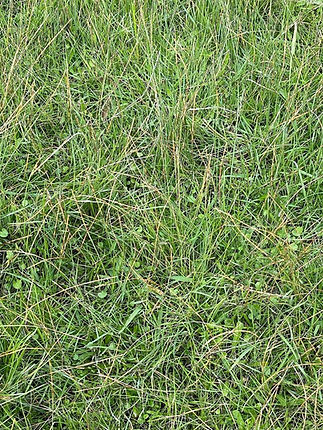
Biodiversity & Nutritional
Wisdom
Biodiversity has become a much-used word in our Modern Society as we desperately try to halt the extinction of many species. But as farmers and breeders of sheep, it is something we should be considering much more in terms of the pasture and grasses we grow for our sheep.
Listening to an interview with “Nourishment” author, Professor Fred Provenza, made me look into this a little more and for those who may choose to follow the theory, the results can be surprising.
Fred suggests that the broader the diversity of plant matter we can supply our sheep, the healthier they will become, and the less we will need to rely on chemicals for drenching and other health issues. The underlying premise is sheep, like other animals, know what they need to eat to stay healthy, but they have to be able to find these plants in their paddocks. So the more diverse their pasture, the better their chances of finding their needs. Rather than planting a paddock of Rye/Clover, they would get more out of a paddock sown with Rye, Clover and a variety of native grasses and forbs. A nutritionally healthy forage would include a variety of grasses, both native and introduced, perennial herbs, and legumes. We know sheep, like other grazing livestock, self-medicate; they know the chemicals they need to fix the problems that ail them. These chemicals available in plant matter are found by the sheep’s sense of smell. We have found our sheep will seek out Dock and sometimes Milk Thistle if they are feeling a little unwell and it is well known the salicylic acid in Willow leaves and bark, acts in a similar way to which Aspirin works for us. Most of our original human medicines came from botanicals, but Big Pharma has pushed us away from that to rely more on the synthetic chemicals, for both ourselves, and our animals. Our sheep are still in tune with using botanicals, but we, as their caretakers need to give them the opportunity to do this, by supplying a diverse range of forage.
Plants also have the ability to stop animals from eating too much of each one, with the secondary compounds they produce. These are in-built chemicals, such as tannins and alkaloids that limit the amount of any one plant the animal wants to eat, much like most of us can only drink “x” number of cups of coffee at one time before we’re feeling a little sick. But for this to work well for our sheep, we need to supply a diverse variety of feed and not overgraze the area by over stocking. Those who have tried this have found their need for drenching has rapidly decreased. Most of our worm burden issues arise from too many sheep in the one area with little diversity of plant life.



How do sheep know what plants are good for them and when to choose what? This is where the nutritional wisdom side of things comes into play. In a similar fashion to humans, they learn from their parents and family groups, if they are allowed to stay together. You only need to watch lambs in their first week of life to understand this is how they learn. They will copy Mum and start trying bits of grass and hay and grain if it is offered. The lesson we can learn from this is to keep our sheep in family groups where we can. Allow the matriarch to lead the flock and allow the young ewe lambs to learn from their Mums. Obviously, this will not work for the ram lambs, who have to be removed from the maternal flock before maturity, but rams can also learn from each other if multiple ages are allowed to co-habit.
Scientists have found it takes around two to three years for the lambs to learn the nutritional wisdom from the mothers, so it is better for them if they can stay with their Mums for this length of time. Research has also shown offspring remember and prefer their mother’s diet for six months after weaning even if they have no access to that food in the meantime, so the nutritional wisdom in animals is strong. Directly observing Mum is not the only way the lambs learn nutritional wisdom as the amniotic fluid provides clues to her diet during pregnancy and her milk provides clues during lactation. So the direct observation of Mum is the next natural progression.
When given the opportunity and a good choice of natural foods, livestock have an astoundingly refined palate, nibbling through the day on as many as fifty kinds of grasses, forbs, and shrubs to meet their nutritional needs with remarkable precision.
In a nutshell, the more biodiverse our pastures, the more likely our sheep can find enough different secondary compounds to keep them healthy, moving them from plant to plant without overgrazing any one area.
The longer the lambs can stay with their Mums, the better their knowledge of nutritional wisdom and the healthier they will be.
More information on Biodiversity and Nutritional Wisdom as well as how this all affects human consumption of food can be found in “Nourishment” by Fred Provenza, 2018, Chelsea Green Publishing, ISBN 9781603588027.
